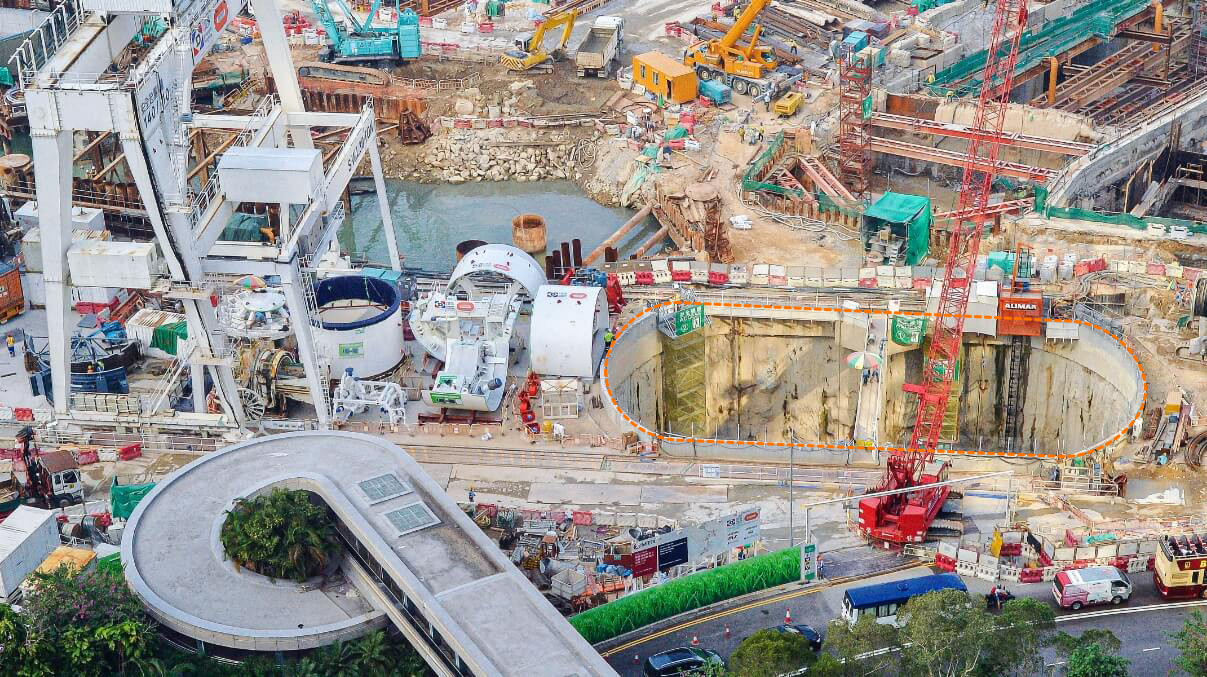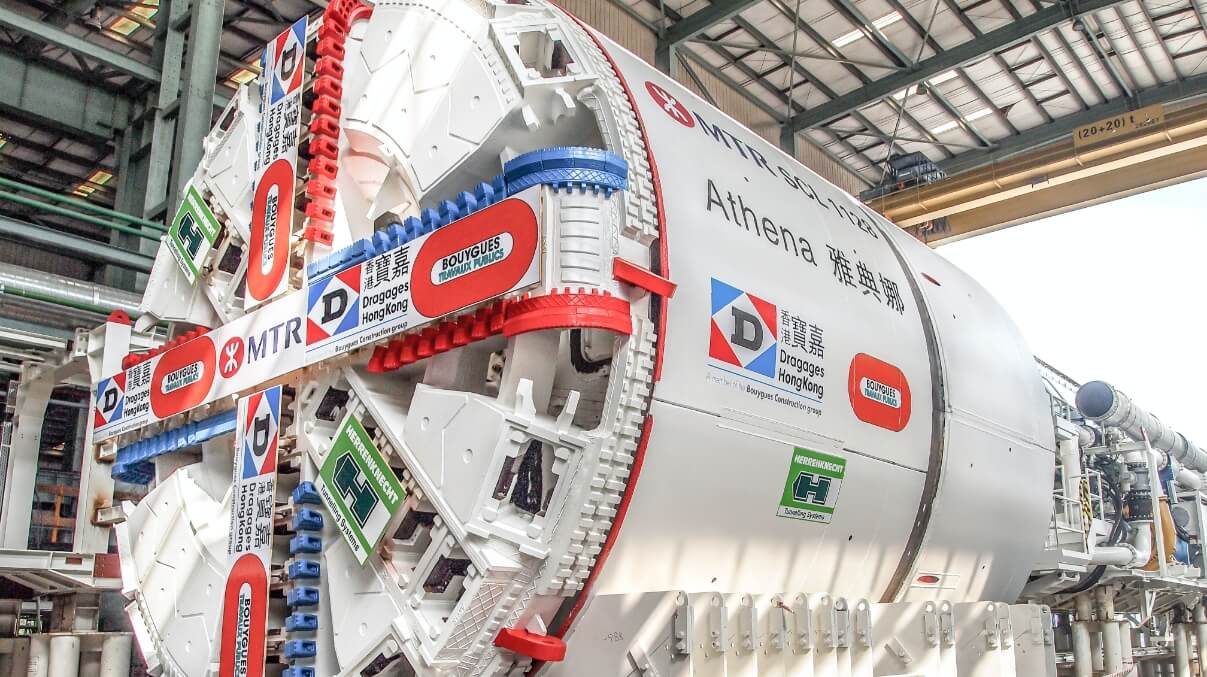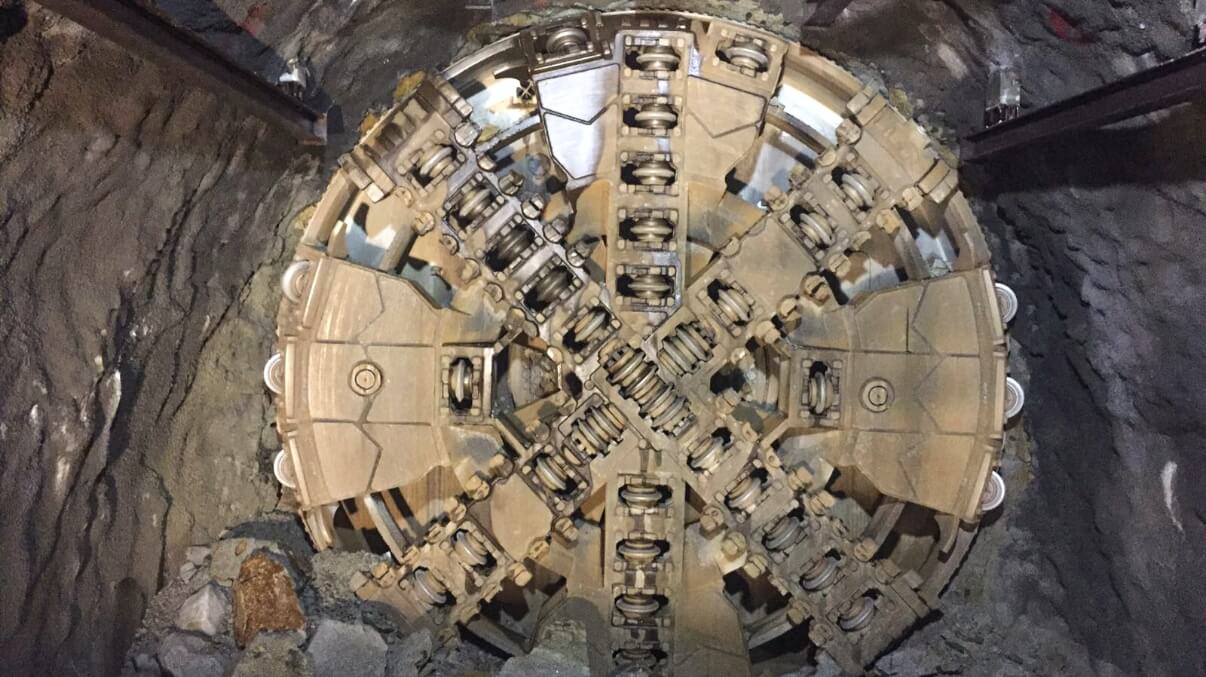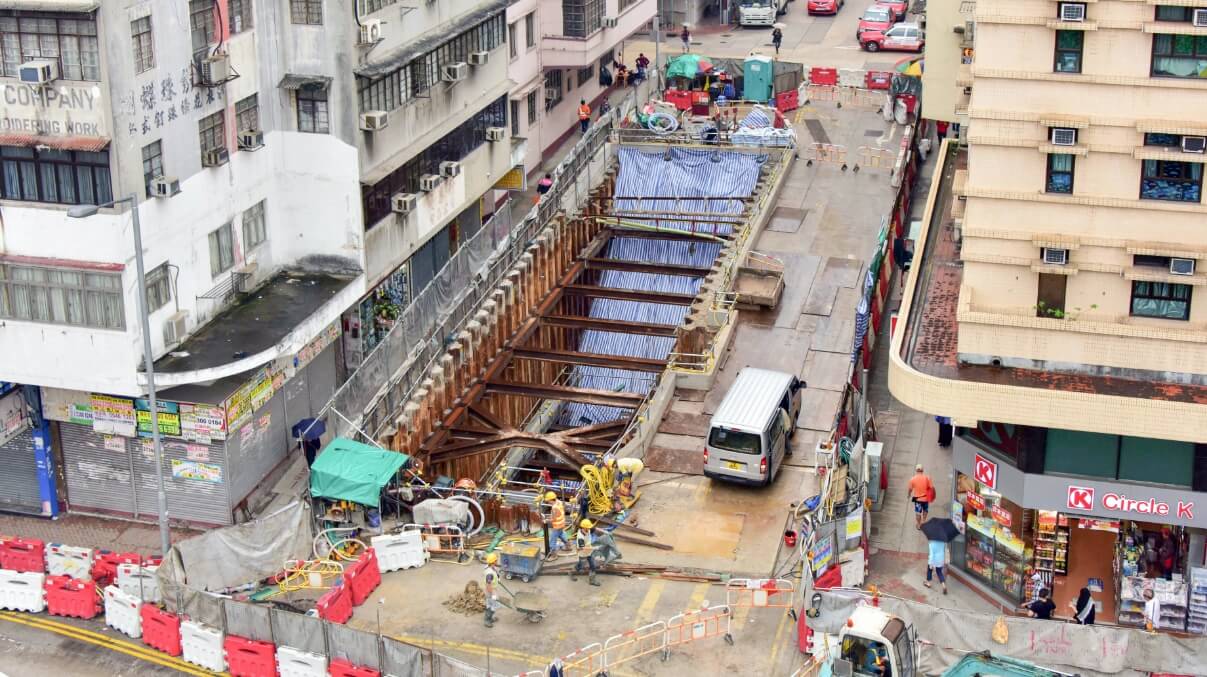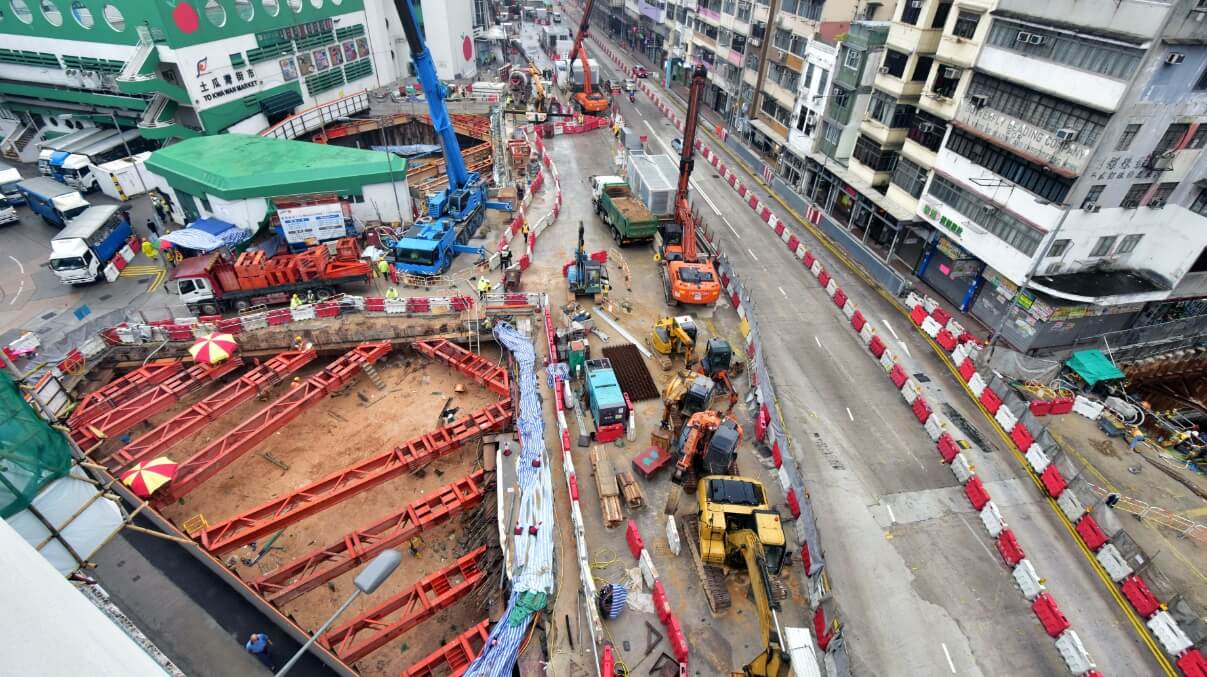How are railway tunnels built?
In general, different tunnel construction methods, including Cut and Cover method, Tunnel Boring, and Drill and Blast method, will be adopted according to the geological conditions based on the results of the ground investigation works and related studies.
Tunnel Boring Machines (TBMs)
Tunnel Boring Machines (TBMs)
Specially designed for building tunnels. TBMs can pass through different types of soil, rock or mixtures of both; excavate and remove excavated materials; and at the same time, install the reinforced concrete lining of the tunnel. There is relatively slight impact to the nearby community and traffic due to the limited disruption to the road surface during construction.
Prior to the tunnel construction, a launching shaft on the ground will be built and different components of the Tunnel Boring Machines will be transferred to the bottom of launching shaft for assembly. The soil and rock materials excavated during the process will be transported by conveyor belt to the back of the TBM where it will be transported to the ground surface via the launching shaft.
Drill and Blast
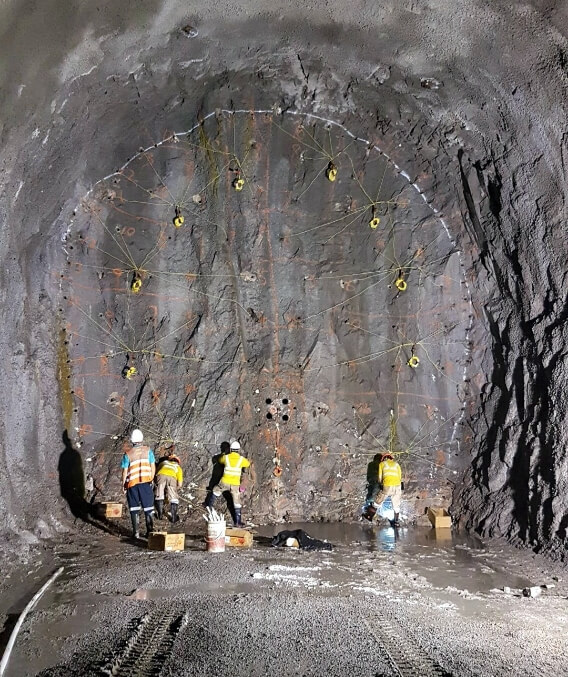
Throwback Photo
Shot firers are installing explosives and detonators at designated positions of the blasting face for the drill and blast tunneling work of the Shatin to Central Link project.
Drill and Blast
Detonate explosives to drill holes in the tunnel surface. Only requires a relatively small construction site, suitable for areas without sensitive receivers.
Before the commencement of works, a detailed assessment of the drilling and blasting operation will be conducted and multiple checking points will also be set up near the drilling and blasting area to closely monitor the construction impact on nearby buildings to ensure public safety.
Behind the Blasting Works
The hard work of shot firers is behind for every successful blast. They are the qualified professionals who have obtained a "Mine Blasting Certificate"in Hong Kong and are permitted to use explosives by the Mines Division of Geotechnical Engineering Office under the Civil Engineering and Development Department. To obtain the certificate, the professionals are required to pass a rigorous assessment. The assessment procedures could mainly be classified into three types, which are structured training, apprenticeship training and overseas qualification.
Throwback Photo
Shot firers are installing explosives and detonators at designated positions of the blasting face for the drill and blast tunneling work of the Shatin to Central Link project.
Cut and Cover
Cut and Cover
Suitable for shallow excavation in soft ground. Generally speaking, underground railway stations will be constructed as close to the ground surface as possible so that members of the public can travel between the station concourse and the ground surface within the shortest time and distance. In this regard, engineers will generally use the cut and cover method to construct underground stations.
Prior to commencing excavation works, sheet piles / diaphragm walls / pipe pile walls will be installed to support the soil and the neighbouring structures to ensure safety. The excavation will then continue to the bottom of the tunnel, and temporary road decks can be placed to maintain vehicular and pedestrian traffic flow where necessary. The road surface will be reinstated after construction is completed.
Suitable for shallow excavation in soft ground. Generally speaking, underground railway stations will be constructed as close to the ground surface as possible so that members of the public can travel between the station concourse and the ground surface within the shortest time and distance. In this regard, engineers will generally use the cut and cover method to construct underground stations.
Prior to commencing excavation works, sheet piles / diaphragm walls / pipe pile walls will be installed to support the soil and the neighbouring structures to ensure safety. The excavation will then continue to the bottom of the tunnel, and temporary road decks can be placed to maintain vehicular and pedestrian traffic flow where necessary. The road surface will be reinstated after construction is completed.

